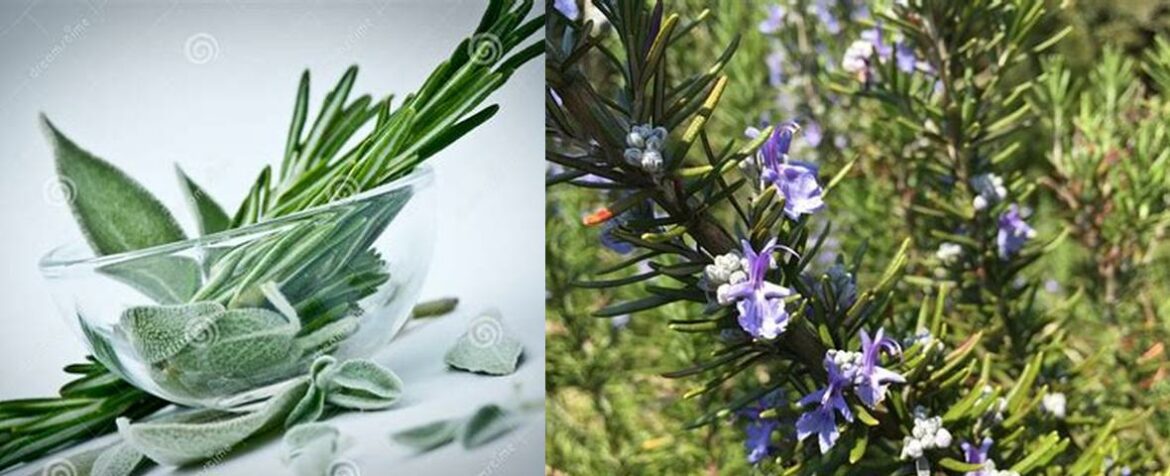Sage Vs Rosemary – Are you ready to embark on a flavorful and healing journey with Sage and Rosemary? These two culinary powerhouses have been spicing up dishes and soothing ailments for centuries. Whether you’re a master chef or a health-conscious individual, the battle of Sage Vs Rosemary is one that cannot be ignored. Get ready to discover their unique characteristics, tantalize your taste buds, and unlock the secrets of their medicinal properties. So, grab your apron and let’s dive into the world of Sage and Rosemary!
Sage and Rosemary: A Culinary and Medicinal Journey
Sage and rosemary stand as two distinct herbs, each possessing unique characteristics and culinary prowess. Hailing from the mint family, they enchant the senses with their aromatic allure and medicinal properties. Join us as we delve into the world of sage and rosemary, exploring their culinary versatility and therapeutic benefits.
Sage: The Earthy Essence
Derived from Salvia officinalis, sage beckons with its soft, silvery-green leaves and woody stems. Its earthy, peppery flavor, tinged with hints of pine and citrus, dances upon the palate. A culinary chameleon, sage pairs harmoniously with poultry, pork, potatoes, and even desserts, adding a touch of savory sophistication. Beyond its gustatory delights, sage boasts anti-inflammatory and antioxidant compounds, rendering it a natural healer.
Rosemary: The Mediterranean Enchantress
Native to the sun-kissed shores of the Mediterranean, rosemary, an evergreen shrub, captivates with its deep green, glossy needle-like leaves. Its earthy and piney flavor adds depth and complexity to culinary creations. Whether gracing lamb, poultry, or roasted vegetables, rosemary’s presence elevates the ordinary to the extraordinary. Renowned for its medicinal virtues, rosemary abounds in powerful antioxidants, aiding digestion and memory while alleviating stress.
Unveiling the Differences: Sage vs. Rosemary
While sage and rosemary share a common lineage within the mint family, their distinctions are undeniable:
- Appearance: Sage’s soft, grey-green leaves contrast with rosemary’s dark green, glossy needles.
- Flavor: Sage’s savory, earthy taste yields to rosemary’s slightly bitter, refreshing allure.
- Culinary Applications: Sage finds its niche in soups, stews, and slow-cooked dishes, while rosemary shines in the company of roasted meats and vegetables.
- Medicinal Properties: Sage’s anti-inflammatory and antioxidant compounds find balance with rosemary’s digestive and memory-enhancing properties, with potential anti-cancer attributes.
Culinary Symphony: Sage and Rosemary in the Kitchen
Sage and rosemary, culinary powerhouses in their own right, harmonize beautifully when combined. Their distinct flavors complement each other, creating a symphony of taste. Experiment with sage’s earthy notes in pasta sauces, stuffings, and roasted meats. Rosemary, with its Mediterranean flair, elevates grilled meats, potatoes, and roasted vegetables to new heights. Both herbs, when used judiciously, transform ordinary dishes into culinary masterpieces.
Medicinal Treasures: Sage and Rosemary’s Healing Touch
Beyond their culinary prowess, sage and rosemary possess remarkable medicinal properties. Sage, with its anti-inflammatory and antioxidant compounds, combats inflammation and oxidative stress. Rosemary, rich in antioxidants, supports digestion, improves memory, and alleviates stress. These herbs, time-honored remedies in traditional medicine, continue to be explored for their potential in modern healthcare.
Tips for Cooking with Sage and Rosemary
- Choose sage or rosemary based on your flavor preferences and the demands of your recipe.
- Introduce the selected herb at the appropriate stage of cooking to maximize its flavor and medicinal benefits.
- Adjust the quantity of sage or rosemary to achieve your desired flavor intensity.
- Stir or mix the herb thoroughly into your dish to ensure uniform distribution.
- Cook or bake your dish as per the recipe instructions, allowing the flavors of sage or rosemary to permeate.
- Taste and adjust the seasoning if necessary, considering the distinctive characteristics of each herb.
Conclusion: A Culinary and Medicinal Tapestry
Sage and rosemary, culinary and medicinal treasures, offer a wealth of flavors and health benefits. Their distinct characteristics and versatility make them indispensable in any kitchen or herbalist’s toolkit. Whether you seek to tantalize your taste buds or nurture your well-being, sage and rosemary stand ready to enchant your senses and uplift your spirit.
FAQ about Sage Vs Rosemary
Q: What is the difference in appearance between sage and rosemary?
A: Sage has soft, grey-green leaves, while rosemary has dark green, glossy needles.
Q: How do sage and rosemary differ in flavor?
A: Sage has a savory, earthy taste, while rosemary has a slightly bitter and refreshing allure.
Q: What are the culinary applications of sage and rosemary?
A: Sage is commonly used in soups, stews, and slow-cooked dishes, while rosemary is often used with roasted meats and vegetables.
Q: Are sage and rosemary from the same family?
A: Yes, sage and rosemary belong to the mint family.
Q: Can sage and rosemary be used interchangeably in recipes?
A: While both herbs have their own distinct flavors, they can be used interchangeably in some recipes depending on personal preference.
Q: How can I incorporate sage and rosemary in my cooking?
A: Sage can enhance the flavors of soups, stews, and slow-cooked dishes, while rosemary can add a delightful taste to roasted meats and vegetables. Experiment with different recipes to find your preferred combination of these herbs.


